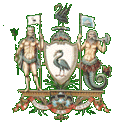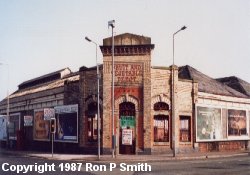

Last Updated : 24 Mar 2016
Transport
Ships
Railways
Trams
Railways
Liverpool & Manchester
Liverpool Overhead
Rainhill Trials
Regional Rail Map
Stations List
Contact
 Elevan months after the famous Rainhill Trials of 1829, the Liverpool and Manchester Railway (LMR) officially opened on the 15th of September, 1830 and was the first railway as we know them today - the world's first public railway operated by steam from the outset and the first intercity railway. The idea soon caught-on and many new lines were built to form a rail network all over Britain. The LMR was absorbed by the Grand Junction Railway in 1845 and then became part of the London & North Western Railway (LNWR) in 1846. On the 12th of June 1865, the line to Riverside Station, a terminius provided for boat trains, particularly the LNWR American Specials was opened. Trains ran via the Waterloo Tunnel to and from Edge Hill Station. Riverside was closed on the 25th February 1971.
Elevan months after the famous Rainhill Trials of 1829, the Liverpool and Manchester Railway (LMR) officially opened on the 15th of September, 1830 and was the first railway as we know them today - the world's first public railway operated by steam from the outset and the first intercity railway. The idea soon caught-on and many new lines were built to form a rail network all over Britain. The LMR was absorbed by the Grand Junction Railway in 1845 and then became part of the London & North Western Railway (LNWR) in 1846. On the 12th of June 1865, the line to Riverside Station, a terminius provided for boat trains, particularly the LNWR American Specials was opened. Trains ran via the Waterloo Tunnel to and from Edge Hill Station. Riverside was closed on the 25th February 1971.
In 1848, rival company the Lancashire and Yorkshire Railway (LYR) opened a second route from Liverpool to Manchester. The LYR terminus in Liverpool was Exchange Station which had been a rebuild of the smaller "Tithebarn Street Station" in 1884-1888. Exchange Station closed on 29th of April 1977. "Tithebarn Street Station" had been opened in 1850 as the terminus of The Liverpool, Crosby and Southport Railway. The LCSR had opened in 1848 with it's original terminus at Waterloo. It became part of the LYR. The LYR also merged with the LNWR, in 1922. In 1923, the LNWR was grouped with the London Midland Scottish Railway (LMSR).
 By the late 19th century with that of the Cheshire Lines Committee (CLC) founded 1865, there were three railway routes available between Liverpool and Manchester. The CLC was jointly owned by the Midland Railway and Great Central Railway and in 1923 these companies were grouped in the LMSR and London & North Eastern Railway (LNER) respectively. The CLC terminus in Liverpool was "Central Station".
By the late 19th century with that of the Cheshire Lines Committee (CLC) founded 1865, there were three railway routes available between Liverpool and Manchester. The CLC was jointly owned by the Midland Railway and Great Central Railway and in 1923 these companies were grouped in the LMSR and London & North Eastern Railway (LNER) respectively. The CLC terminus in Liverpool was "Central Station".
By 1948, all these companies had become part of the British Railways system.
A "railway omnibus" had run on the Liverpool dock railways in 1859. After George Francis Train opened Britain's first "street railway" in Birkenhead in 1860 he was also responsible for Liverpool's first tramway line in 1860. This system was short-lived but in 1865 the Liverpool Tramways Company was formed which eventually became part of Liverpool Corporation Passenger Transport.
The Mersey Railway opened in 1896 when the first tunnel under the River Mersey opened. By 1890, it was carrying 10 million passengers per year. In 1903, the system was electified and became the first railway in the world to switch entirely from steam to electric traction. An extension from James Street Station to Central Station was built providing a link to Wirral.
The Liverpool Overhead Railway (LOR) was opened on the 4th of February, 1893 and initially ran from Seaforth in the north to Herculaneum Dock in the south. It used standard gauge and had 14 stations. Later it was extended and in the south then terminated at Park Road, Dingle as an underground station. The LOR was electrically operated from the start and the first electric overhead railway in the world. Unlike the other railways of Liverpool, it did not get nationalised and did not become part of British Railways. The system was closed on the 30th December, 1956.